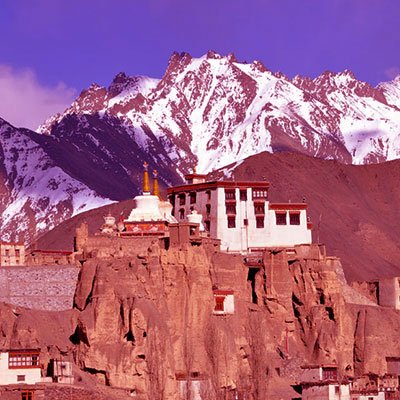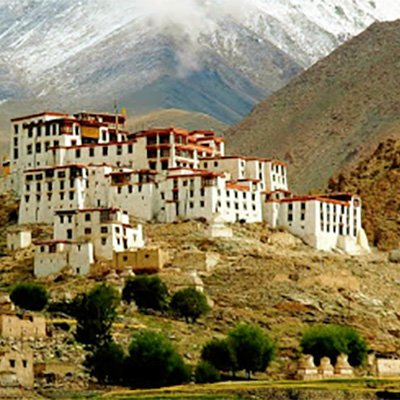Home > Ladakh > Monasteries
Leh-Ladakh Monasteries
Alchi Monastery
Alchi Gompa is located near the small village of Saspol. It is one of the earliest monasteries built in Ladakh, dating from the 11th century. Because it was constructed before the invading wars begun in the 15th century, Alchi was built on lowlands, rather than on a hilltop as other gompas were, to protect them from marauding armies. The gompa at Alchi was erected by Rin-chen-Izghimpo, one of the first Ladakhi kings to engage in foreign relations. To build the monastery, the Ladakhi king signed a treaty with the Gyalpo (king) of Tibet, who agreed to provide the artisans.
Diskit Monastery
The Nubra Valley lies north of Leh and is accessible over the Khardung la (18,500 feet/5,600 m), one of the highest motorable roads in the world. The Valley was on the caravan route from Leh to Kashgar via the Sasir and Karakoram passes. Apart from unparrelled trekking opportunities, the valley houses several Buddhist monasteries such as Sumur and the 350 year-old Diskit gompa, famous for its murals.
Hemis Monastery
Hemis Gompa : was built in 1620 by the king-architect Singe Namgyal who was a great patron of Buddhism. He filled Hemis with golden statues, stupas set with precious stones and thankhas brought from many places including Tibet. The lamas of Hemis were associated with the Ladakhi royal family and became quite prosperous, owning much land and supervising many smaller, scattered monasteries. Hemis is the richest monastery in Ladakh and although only about a dozen lamas actually live here, it has several hundred lamas attached to its various subsidiary monasteries.
Lamayuru Monastery
Lamayuru Gompa : lies 15 km east of the Fatu La on the Srinagar-Leh Highway, with its medieval village seemingly growing out of the rocky hillside below it. In the past, Lamayuru has housed up to 400 lamas, but presently there are only 30 to 50 lamas living here, although about 150 lamas belong to the gompa. The other lamas stay and teach at Lamayuru's smaller daughter gompas located in outlying villages.
Thiksey Monastery
Thiksey Gompa was built some 600 years ago and consists of 12 levels ascending a hillside, culminating in an Incarnate Lama's private apartments at the summit. The gompa contains 10 temples; below the monastery itself are chapels and "houses" of monks stretching down the hillside. There are about 100 monks of the yellow-hat sect of Buddhism living here. After entering the main courtyard, to the immediate right and up several steps is a new temple containing a large Buddha statue. This Buddha, 15 meters tall was constructed in 1970 to commemorate a visit to Thiksey by the Dalai Lama.
Likir Monastery
Likir Gompa is set on an isolated ridge a few kilometers north of Saspol. The road approaching the gompa makes a wide semi-circle around its base, affording beautiful views of the gompa from different vantage points. Likir was established around the 15th century and early in its history, became responsible for the oversight of Alchi gompa, to which it has posted lamas up to the present day. Likir belongs to the yellow-hat sect and currently houses about 120 lamas.
Phuktal Monastery
Phuktal Monastery is like a honeycomb, cut into a rock under a gignantic grotto and has more than 70 Monks. The library three large and one small prayer room etc and the grave of Gangsem Sherap Sampo who founded Phuktal. In the cave over the monastery there is a hollow in rock the water level of which never reduces even after taking out any amount of water from there. Water is said to have healing powers. There is also a stone tablet left by Alexander Cosmo de Koros an Hugaraian who explore Tibet and lived in this monastery in 1826-27.
Karsha Monastery
Spend the day visiting some of the nearby gompas. Karsha, the largest and most important monastery in Zanskar, lies on the other side of the Dodu river, a two- to three-hour walk away. Karsha is a treasure trove of Buddhist art, highlighted by the 500-year old wall frescoes in the lHabrang (teaching room). Padum, the district headquarters of Zanskar, located on the southern part of a wide fertile plain in which the Tsarap Lingti Chu and the Stod rivers join to form the Zanskar river. The small township clings to a hillock, the site of an ancient palace and fort.








